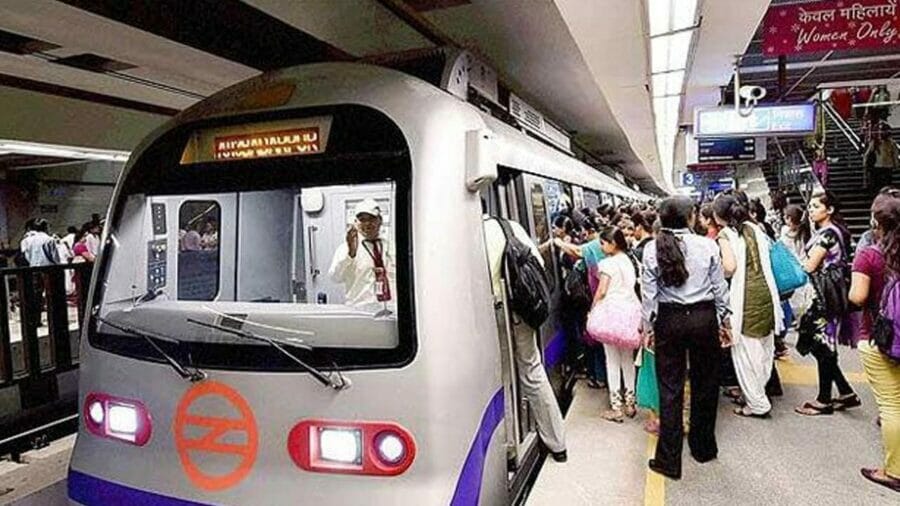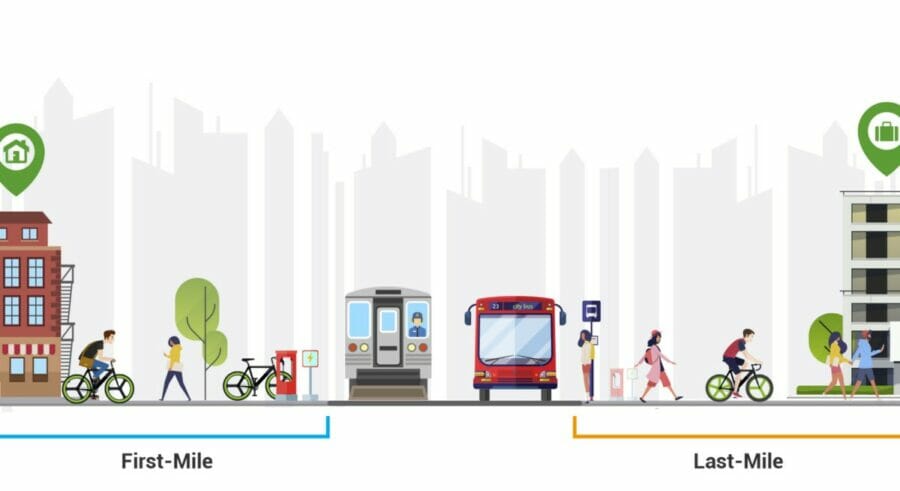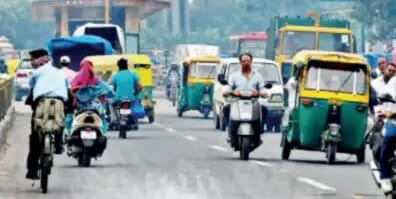STAMP or Station Access and Mobility Program is an initiative launched by World Resources Institute (WRI) India in partnership with Toyota Mobility Foundation. Mr. Sudeept Maiti, Associate Program Director, Transport, WRI India tells us how STAMP is improving last-mile transportation of goods and people in major cities and how the citizens will be able to benefit from it.
What is the goal/objective of STAMP?
To meet the requirements of a rapidly growing urban population, Indian cities have started investing in mass rapid transit systems, primarily the metro rail. Improving commuter access to this expanding network through better connectivity has long been a challenge and will be crucial to the metro’s success in India.

So far, the lack of integration between the metro and feeder modes of transport has been a major factor impacting metro ridership in India. As the metro rarely offers door-to-door service for commuters, providing quality and innovative first-and last-mile connectivity has become increasingly important to get people to switch to it.
The Station Access and Mobility Program (STAMP) is an initiative that aims to improve access to public transportation in Indian cities by addressing the first and last-mile connectivity issue. The program’s goal is to provide safe, convenient, and efficient access to public transportation for all users, including vulnerable groups, by creating better transport connections between the metro and surrounding communities.
STAMP does this by closely working with city metro agencies to identify the gaps that can impact access to the metro. It incubates innovative solutions to these problems through the STAMP Challenge, which provides financial support to entrepreneurs and private individuals that can demonstrably show how they can improve multimodal integration and connectivity. In addition to the STAMP Challenge, we also conduct surveys and research that help various metro stakeholders identify and address gaps in last-mile connectivity.

Which other cities have STAMP worked with?
STAMP, an initiative started by Toyota Mobility Foundation and WRI India, has worked in seven cities across India. Starting with Bengaluru in 2016, STAMP has since deployed in Hyderabad, Kochi, Mumbai, Pune, Nagpur, and Delhi.
Can you share some statistics on how STAMP has made a difference in these cities?
After a careful selection process, winners are given the opportunity to pilot their solutions in the city. STAMP pilots typically deploy for three months in and around metro stations. The team uses data from the pilots to better understand what last-mile solution works for commuters and transit agencies from that particular city.
Over the course of 5 editions, STAMP has enabled about 50,000 last-mile trips through mobility solutions that were chosen by the program to deploy at metro stations. Our pilots have also saved over 240,000 passenger minutes as a result of commuters switching to modes that were given a platform through STAMP.
Our research has also shown us that one of the main factors that determine whether a person uses a metro or not is the quality of its last-mile services. Several variables determine the success of a mode, particularly its cost, time, safety, and reliability. For example, most public transportation users are cost-conscious, and providing affordable last-mile options will be critical to getting them to use the metro. These insights can help metro agencies and last-mile providers deploy more targeted services at metro stations and ultimately increase revenue and ridership.

What is STAMP’s agenda for Delhi?
Our Delhi initiative launched in September 2022, with the goal of making public transport safer and more efficient in Delhi and the National Capital Region.
What steps will be taken in order to meet the objective?
STAMP is working with Delhi Transport Department and Delhi Metro Rail Corporation (DMRC) on two focus areas. The first objective is to deploy a mobility-as-a-service (MaaS) platform that will allow commuters to plan, book, and pay for their journeys on a single, integrated platform. The second is to build greater efficiency in last-mile connections in underserved areas.
What resources will STAMP be leveraging to achieve the goal?
“By bridging the gaps between the public and private sectors, STAMP employs a truly collaborative approach to making transport more integrated. STAMP creates the space to experiment and build more innovation that can drive the future of integrated transport,” notes Madhav Pai, Interim CEO, WRI India.
In Delhi, we are working with the region’s various transport agencies to deploy our solutions. In addition, we have conducted surveys with over 3,000 metro commuters across Delhi to understand how they travel and their concerns. These responses will help shape the kind of pilots we create in the city.

What is the plan for last-mile transportation? Will it only be EV driven?
Our learnings from seven cities show us that there is no one-size-fits-all solution to last-mile connectivity. There are several factors at play. Our research helps us better identify how these different factors influence commuters to choose a particular last-mile mode.
A detailed understanding of this can help stakeholders, from metro agencies to last-mile service providers, make more informed decisions when prioritizing different solutions. Catering to a wide variety of commuters requires understanding the kind of transit demand around stations.
What kind of new innovations will we be able to see?
TMF’s intention, over the last 6 years, has always been to enhance public transportation ridership through the best data and human-centric first and last-mile solutions. Now that we have reached the final city of our challenge, we have recognized the complexity of delivering the best solutions and the need for hardware, software, data, and financial components to seamlessly help commuters. MaaS and aggregation are an integral part of such a solution.
“While MaaS and aggregation have been implemented around the world (and to a limited extent in India), it will be interesting to see how a full-fledged solution would play out in the Indian context. Delhi NCR, which is spread across states and is quite mature, has several transit agencies shaping different aspects of its mobility landscape. Bringing different stakeholders on board to create a unified transit platform would be instrumental in achieving the city’s vision of getting more people to use public transport and TMFs vision of providing mobility for all through greater carbon-reducing options,” says Pras Ganesh, Executive Program Director, Toyota Mobility Foundation.
Which city will STAMP work with after Delhi?
After our work across seven cities, STAMP is approaching the last phases of its rollout. STAMP will focus on using its learnings to develop research around last-mile connectivity that can be used by any Indian metro agency when looking to deepen its transit integration efforts.

